The asset management industry is entering a defining moment. Cost pressures are intensifying, investor expectations are shifting, and the pace of technological change is accelerating, writes Simon Keefe, head of digital assets at Calastone.
For decades, the industry has operated with a model designed for a different age, one characterised by manual processes, fragmented data flows, and distribution structures that struggle to keep pace with how investors want to engage.
Recent industry commentary highlights that tokenisation represents not just an operational upgrade, but the ultimate end-game opportunity to redefine how funds are created, owned, and exchanged. Yet the benefits are not confined to the distant future, firms can already begin to unlock new distribution efficiencies, reaching investors more directly and cost-effectively than current legacy channels allow.
Tokenisation is emerging as a credible answer to these challenges. By representing fund units as digital tokens on distributed ledger technology (DLT), managers have the opportunity not only to re-engineer operational efficiency but also to expand the possibilities of fund distribution, including into the fast-evolving Web3 and decentralised finance (DeFi) universe.
The rising cost burden
Our recent research, Tokenisation at Work: A Deeper Look at the Cost Engine of Funds, analysed the economics of fund operations and uncovered just how heavy the cost burden has become.
Across a benchmark fund with $1.264bn assets under management (AUM), more than 60% of operating costs are concentrated in the back office, with fund accounting alone responsible for over $2m annually. Reconciliations, transfer agency, settlements, and other administrative functions consume millions more.
This is not just expensive, but also inefficient. Nearly half these costs are directly linked to manual execution and headcount. Even relatively low error rates result in recurring rework, which adds up to a hidden cost that can run into the tens of thousands each year.
On current trends, the cost of running a fund is projected to rise by around a third over the next three years. For managers already grappling with fee compression and thinning margins, this trajectory is unsustainable.
Efficiency through tokenisation
Tokenisation offers asset managers a real opportunity. By digitising fund records and units, embedding them within a distributed ledger, many of the processes driving cost, from reconciliation through to settlement, can be streamlined or automated.
Our modelling suggests tokenisation has the potential to cut fund operating costs by as much as 23%, equivalent to a reduction of 0.13% of AUM. In real terms, this translates into a potential uplift in profitability of between $3.1m and $7.9m per fund, depending on scale and product mix. The most pronounced potential savings are in fund accounting, transfer agency, and compliance and reporting functions. These are transformational improvements that can reframe the economics of fund management.
Beyond Cost: agility and innovation
The benefits of tokenisation extend beyond operational efficiency. One of the most striking findings is the impact on speed to market. While tokenised structures can reduce fund launch timelines from an average of 12 weeks to around nine, it is important to note that much of the remaining delay lies not in the technology but in external processes such as custodial selection and market set-up. Even so, nine weeks represents a material improvement over the current standard. Similarly, seed requirements, which typically exceed $50m, could be reduced to around $38m and in some cases by up to half.
Crucially, when you dig beneath these improvements, it becomes clear that the remaining barriers are tied to the traditional fund structure itself. This opens the door to broader possibilities: tokenisation could enable new models such as personalised separately managed accounts (SMAs), delivered at a cost and entry point accessible to the mass-affluent market, with immediate issuance.
For asset managers, this agility enables innovation. New strategies, including niche thematic funds, bespoke client portfolios, or more experimental approaches, can be brought to market faster and at lower risk. Tokenisation, in short, lowers the barriers to launching and scaling new investment ideas.
Opening the Door to Web3 and DeFi
Perhaps the most exciting dimension of tokenisation is distribution. Early movers have already staked their claim in Web3 and DeFi, leaving the rest of the industry scrambling to catch up.
Crucially, this does not mean abandoning existing funds. Tokenisation enables managers to use current structures across both traditional channels and digital venues, reaching new investors while maintaining their established base. This dual capability means managers can preserve their current distribution base while gaining access to new investor cohorts.
Collateral adds a further layer of opportunity. Tokenised funds can be pledged, transferred, and mobilised with far greater efficiency, making this a clear early use case.
The strategic advantage of early adoption is clear. Those that move first not only establish a foothold in new distribution ecosystems but also gain critical experience in how to operate, govern, and innovate at scale. Those who hesitate risk being left behind.
Adoption will be incremental
Transitioning to tokenisation need not be a binary choice. Adoption is likely to unfold step by step, but importantly, distribution is among the earliest and most practical areas where tokenisation can be applied.
By enabling existing funds to be represented and distributed as tokens, managers can access new digital channels, including Web3 and DeFi ecosystems, without re-engineering their entire operating model from the outset. At the same time, managers can also capture back-office efficiencies, gradually embedding tokenisation into accounting, settlement, and reporting processes. This dual pathway allows firms to prove value quickly in distribution, while building towards the deeper operational transformation that tokenisation makes possible.
A strategic choice
Asset managers today face a stark choice. They can persist with legacy models, absorbing ever-rising operational costs and fighting to preserve margins in an increasingly competitive marketplace. Or, they can embrace tokenisation as both a defensive measure to cut costs and an offensive strategy to unlock faster innovation and new avenues of distribution.
Tokenisation is not a theoretical concept. It is already being tested, implemented, and proven. The question for managers is not whether it will reshape the industry, but how quickly they are prepared to adapt. Those that act decisively will secure a competitive edge in both efficiency and reach. Those who wait may find themselves overtaken by peers that saw tokenisation not as a distant possibility but as an urgent strategic imperative.
Simon Keefe is head of digital assets at Calastone. Simon joined Capital Pioneer at our inaugural Summit in October. Read about it here.



